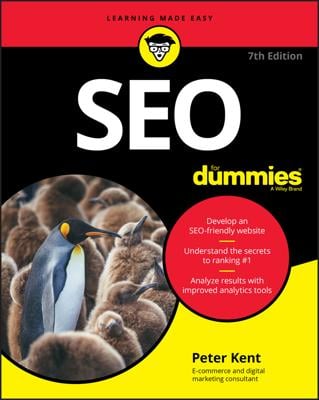When you're structuring the HTML coding for a Web page, it can look a little like an outline, with main headings and subheadings. For best SEO results, it is important to place keywords in those headings, within Heading tags.
Heading tags are part of the HTML coding for a Web page. Headings are defined with H1 to H6 tags. The H1 tag defines the most important heading on the page (usually the largest or boldest, too), whereas H6 indicates the lowest-level heading. You want to avoid thinking of headings as simply formatting for your pages: Headings carry a lot of weight with the search engines because they're for categorization, not cosmetics. You can control what each heading looks like consistently through your site using a CSS style sheet that specifies the font, size, color, and other attributes for each Heading tag. Here's an example of what various heading tags can look like:
<H1>This is a heading</H1> <h2 id="tab1" >This is subheading A</H2> <h2 id="tab2" >This is subheading B</H2> <H3>This is a lower subheading</H3>
Search engines pay special attention to the words in your headings because they expect headings to include clues to the page’s main topics. You definitely want to include the page’s keywords inside Heading tags.
Heading tags also provide your pages with an outline, with the heading defining the paragraph that follows. They outline how your page is structured and organize the information. The H1 tag indicates your most important topic, and the other H# tags create subtopics.
You should follow several SEO best practices for applying Heading tags. First, you want to have only one H1 tag per page because it’s basically the subject of your page. Think of your H1 tag like the headline of a newspaper article: it wouldn't make sense to have more than one. You can have multiple lesser tags if the page covers several subsections. In feature articles in newsletters, you occasionally see sub-headlines that are styled differently than the headline: those would be the equivalent of an H2.
Say that you have a page that describes how you can customize classic Mustang convertibles. Your very first heading for your page should be something like this:
<H1>Customizing Classic Mustangs</H1>
Your second paragraph is about customizing the paint job for the convertible. So it should have a heading that reads:
<h2 id="tab3" >Customizing Paint for Mustangs</H2>
When you view the code of your page (which you should most definitely do even if you have someone else create it for you), it should look something like this:
<H1> Customizing Classic Mustangs s</H1> <p>200 words of content about Customizing Classic Mustangs using the keywords.</p> <h2 id="tab4" > Customizing Paint for Mustangs </H2> <p>200 words of content about Customizing Paint for Mustangs using the keywords</p> <h2 id="tab5" > Customizing Upholstery for Mustangs </H2> <p>200 words of content about Customizing Upholstery for Mustangs using the keywords.</p>
When assigning Heading tags, keep them in sequence in the HTML, which is how the search engines can most easily read them. Heading tags should follow the outline structure you used in school for an outline or a technical paper. If you wanted to add an H3 tag, it would have to follow an H2 in the code. Similarly, if you had an H4 tag, it could only follow an H3 tag and not an H2.
Heading structure is a relatively simple concept, but you would be surprised at how many Web sites use the same type of heading for every paragraph, or just use their Headings tags to stuff keywords into the HTML code. In reality, many sites do not even use Heading tags, so it should be a quick win to place appropriate headings on your site. Absolutely avoid any headings that look like this:
<H1>Mustang Mustang Mustang Ford Mustang</H1>
This tag is unacceptable to search engines (to say nothing of your visitors), and is considered spam.
The words in each Heading tag should be unique and targeted to the page they're on. Unique and targeted means that your Heading tag's content shouldn't be duplicated anywhere across the site. If the heading on your tires page is "Classic Mustang tires," "Classic Mustang tires" shouldn't be the H1 on any other page in your site.
Search engines look for uniqueness on your page. For example, if you have an H1 heading of Ford Mustang Convertible at the top of two different pages, the search engine might read one of the pages as redundant and not count it. Having unique Heading tags allows the search engine to assign more weight to a heading, and headings are one of the most important things on the page besides the Title tag.

